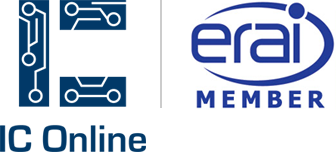A Guide to the PCB Manufacturing Process: Essential Steps You Need to Know
The creation of Printed Circuit Boards (PCB) is a precise and multi-step procedure that turns a circuit board design into a tangible, functional electronic device. Here’s a streamlined walkthrough of the process, tailored for those interested in the intricacies of PCB fabrication.
Initial Design and Pre-production
Step 1: PCB Design Layout Using advanced CAD software, engineers meticulously lay out the circuit design. The finalized design is then converted into a machine-readable format, typically a set of Gerber files, which act as a blueprint for the manufacturing process.
Step 2: Printing the Design onto Film The Gerber files guide printers as they create clear and detailed films for each PCB layer, which will be crucial in the imaging process.
Preparing the Core Material
Step 3: Choosing the Substrate The foundational material, generally FR-4, is selected for its robustness and excellent insulation properties, which are vital for the PCB’s functionality.
Step 4: Inner Layer Processing Copper is printed onto the substrate, followed by a photoresist application. UV light hardens the photoresist through the films, outlining the circuitry on the inner layers.
Layer Alignment and Lamination
Step 5: Layer Alignment and Inspection Precise alignment of the layers is performed, and each layer is scrutinized for accuracy using automated optical inspection equipment.
Step 6: Laminating the Stack The layers are united under heat and pressure, with prepreg material between them, to form a solid, multi-layered PCB.
Drilling and Plating
Step 7: Drilling Holes Computer-guided drills create precise holes for component leads and vias to interconnect the layers.
Step 8: Electroplating The board undergoes electroplating, which deposits copper onto the drilled holes, establishing a thin conductive layer across the PCB.
Outer Layer Detailing
Step 9: Outer Layer Imaging Using a similar technique to the inner layers, the outer layers are coated, exposed to UV light through films, and then developed to reveal the copper underneath.
Step 10: Etching the Excess Copper The unneeded copper is etched away, leaving the desired circuit pattern. The protective photoresist is also removed at this stage.
Finalizing the PCB
Step 11: Solder Mask Application A solder mask is applied to protect the PCB, leaving only the necessary pads and holes exposed.
Step 12: Silkscreen Printing and Surface Finish The silkscreen layer is added for labels and reference indicators, followed by a surface finish to safeguard the copper from oxidation and to prep for soldering.
Testing and Profiling
Step 13: Electrical Testing Every PCB is rigorously tested for electrical integrity, ensuring there are no faults in the circuit connections.
Step 14: Cutting the Boards The individual boards are separated from the larger panel through routing or V-scoring, depending on the design specifications.
Quality Assurance and Delivery
Step 15: Final Inspection and Packaging A thorough inspection is conducted for any physical defects. Once approved, the PCBs are packaged and dispatched to the client.
This guide simplifies the complex nature of PCB manufacturing into understandable segments, showcasing the meticulous attention to detail required at each phase. Selecting a manufacturer who excels in these steps is essential for ensuring that the final product meets the highest standards of quality and reliability.





